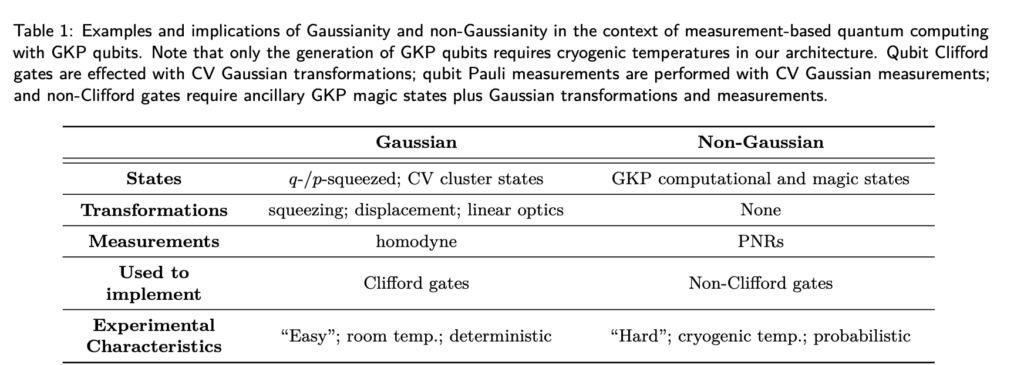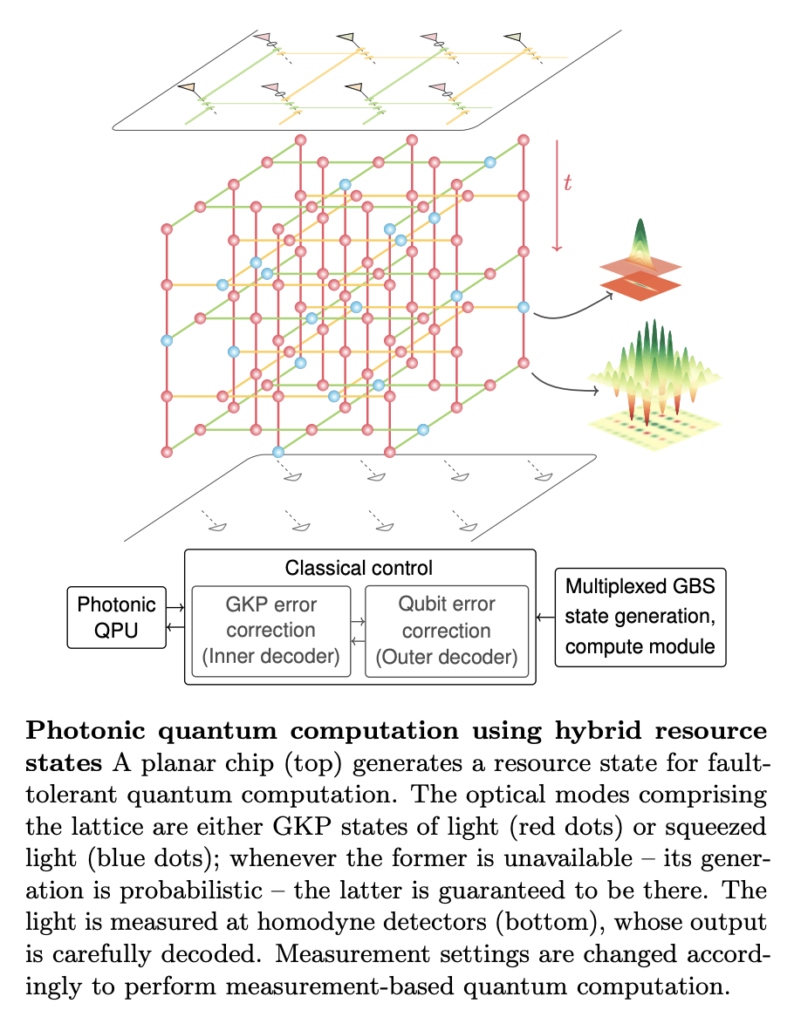Xanadu Quantum Technologies is a Canadian quantum computing hardware and software with US$145 million of funding.
In May, 2021, they raised US$100M in Series B financing. Bessemer Venture Partners led the round with participation from Capricorn, Tiger Global, BDC Capital, In-Q-Tel, along with returning investors Georgian, OMERS, and Tim Draper. The round brings Xanadu’s total investment to date to US$145M.
Xanadu was founded in 2016 with the objective of developing photon-based quantum computing to perform rapid and previously impossible computations at room temperature. They use silicon nitride chips.
This could be the most viable approach towards large scale quantum computers. They are leveraging mature silicon computing manufacturability and light’s ability to carry information across networks.
The systems operate primarily at room temperature and easily integrates into existing telecommunication infrastructure, enabling a system that can be housed in a standard, compact server rack and installed in regular data centers.
Over the past few years, Xanadu has consistently doubled its qubit count and made its quantum computers available over the “Xanadu Cloud”, described as the world’s first photonic quantum cloud platform.
Xanadu has also released two open-source software products: PennyLane, the hardware-agnostic and industry-leading standard for quantum machine learning; and Strawberry Fields, the only full-stack platform for photonic quantum computing.
They are initially focused on developing programmable Gaussian Boson Sampling (GBS) devices. GBS is a generalization of Boson Sampling, which traditionally uses single photons as an input; GBS uses squeezed states of light. In 2020, Xanadu published a blueprint for building a fault-tolerant quantum computer using photonic technology.

Blueprint for a Scalable Photonic Fault-Tolerant Quantum Computer
Arxiv – Blueprint for a Scalable Photonic Fault-Tolerant Quantum Computer
J. Eli Bourassa, Rafael N. Alexander, Michael Vasmer, Ashlesha Patil, Ilan Tzitrin, Takaya Matsuura, Daiqin Su, Ben Q. Baragiola, Saikat Guha, Guillaume Dauphinais, Krishna K. Sabapathy, Nicolas C. Menicucci, Ish Dhand
Photonics is the platform of choice to build a modular, easy-to-network quantum computer operating at room temperature. However, no concrete architecture has been presented so far that exploits both the advantages of qubits encoded into states of light and the modern tools for their generation. Here we propose such a design for a scalable and fault-tolerant photonic quantum computer informed by the latest developments in theory and technology. Central to our architecture is the generation and manipulation of three-dimensional hybrid resource states comprising both bosonic qubits and squeezed vacuum states. The proposal enables exploiting state-of-the-art procedures for the non-deterministic generation of bosonic qubits combined with the strengths of continuous-variable quantum computation, namely the implementation of Clifford gates using easy-to-generate squeezed states. Moreover, the architecture is based on two-dimensional integrated photonic chips used to produce a qubit cluster state in one temporal and two spatial dimensions. By reducing the experimental challenges as compared to existing architectures and by enabling room-temperature quantum computation, our design opens the door to scalable fabrication and operation, which may allow photonics to leap-frog other platforms on the path to a quantum computer with millions of qubits.
Photonics is currently the only platform that enables building room-temperature, modular, and easily-networked quantum computers. The advantages of photonics are augmented by using qubits that are encoded into the state of light using a method proposed by Gottesman, Kitaev and Preskill (GKP). These so-called GKP qubits are a leading candidate for optical quantum computation because:
(i) an important class of gates, operations, and measurements on these states can be performed with Gaussian resources, which are natively available and easy to implement on integrated photonic devices, and
(ii) they are inherently robust to noise and optical losses. Moreover, computation with GKP qubits can be performed at room-temperature, which makes them especially attractive for the scalable fabrication and operation of quantum computers
GKP qubits can be produced by Gaussian boson sampling (GBS) devices. These devices displace, squeeze, and interfere light – all Gaussian operations – and then guide it toward photon-counting detectors. When photons in all but one mode of the light are counted, the light in the unmeasured mode emerges in something approaching a GKP qubit, as long as a specific photon-number pattern is observed in the detectors. Although such a process is probabilistic, that is, conditioned on the observation of this pattern, many GBS devices can be run simultaneously to boost the likelihood of making a GKP qubit. But even with this approach, termed multiplexing, creating a GKP qubit with near certainty requires very many GBS devices. This requirement hinders existing photonic architectures, which require that GKP qubits be available on-demand.
We propose a scalable architecture for fault-tolerant measurement-based quantum computation that overcomes this severe limitation of GKP qubit production. Our method exploits a hybrid resource state comprising GKP qubits at some modes and squeezed states of light at others. Multiplexed GBS devices are still used to generate GKP qubits; however, when these devices fail, the mode is instead guaranteed to be prepared in a squeezed state. This mode becomes entangled with the others, as it would in a CV cluster state. Computation can still be performed on this squeezed-state mode but now the number of GBS devices needed is no
longer prohibitive.
Introducing Gaussian neighbors to the GKP modes of the cluster state leads to one complication though. When a GKP mode is measured to perform a gate, its intrinsic structure helps reduce the noise in the quantum state through the well known process of GKP error correction. But when squeezed state modes are measured, a known amount of random noise is injected into the neighboring modes, which might degrade the quality of the computation if not accounted for. To tackle this problem, we introduce a novel decoding procedure for the hybrid cluster state. Our decoder takes the noisy measurement values and uses the knowledge of the squeezed state locations in order to produce better-informed qubit readout values. Then, usual qubit decoding techniques can be applied to correct any errors that arise in the computation.
Thus our architecture enables scalable fault-tolerant quantum computation with optically-generated GKP states or squeezed states of light. More than that, it uses a room temperature moderately-sized planar photonic chip, which drastically reduces the difficulties in a scalable fabrication and running of the computer. Our planar architecture also satisfies a crucial requirement towards fault tolerance: ensuring that any noise does not extend beyond a qubit’s neighbours. These advantages may allow photonic quantum computation to leap-frog other platforms in the quest to build a scalable fault-tolerant universal quantum computer operating on millions of qubits.
They have proposed a concrete and scalable architecture for quantum computing with light. By using a hybrid resource state that can be generated and manipulated using near-future photonic technology, our architecture synthesizes modern techniques in scalable entangled resource state generation and bosonic codes. This “best of both worlds” hybrid approach comes with a novel error structure that arises from the Gaussian model of state imperfections and the use of probabilistic bosonic qubit sources. Numerical results show that such errors can be handled by our tailored two-tier decoder that makes use of continuous- and discrete-variable syndrome data.
Xanadu Advantages – modular nature, minimal cryogenic requirements, and fast clock speeds. Potential to scale in the near to mid term to millions of qubits.


SOURCES- Xanadu, Arxiv – Blueprint for a Scalable Photonic Fault-Tolerant Quantum Computer
Written By Brian Wang, Nextbigfuture.com

Brian Wang is a Futurist Thought Leader and a popular Science blogger with 1 million readers per month. His blog Nextbigfuture.com is ranked #1 Science News Blog. It covers many disruptive technology and trends including Space, Robotics, Artificial Intelligence, Medicine, Anti-aging Biotechnology, and Nanotechnology.
Known for identifying cutting edge technologies, he is currently a Co-Founder of a startup and fundraiser for high potential early-stage companies. He is the Head of Research for Allocations for deep technology investments and an Angel Investor at Space Angels.
A frequent speaker at corporations, he has been a TEDx speaker, a Singularity University speaker and guest at numerous interviews for radio and podcasts. He is open to public speaking and advising engagements.


There are many companies that provide development assistance, but not all are reliable or suitable for people. I also decided to create a website for my company, and for this I found this dedicated software development team ukraine that has helped me to develop my new application and business either. It helped me create a website quickly and efficiently, and now it will be easier for my clients to request services from me.
D-Wave…
betcha most assembled/near-assembled systems are not even publicized…
patents are certainly disporportioantely down vs comparable tech explosions.
-whisper- secret- hide-
1000-qubit D-wave 2x quantum computer as the first 'quantum for the rest of us' (as in top 1% university labs, a few DARPA depts….)
As with all that intends to be released, its about manufacture and quality control. Proof of concept is one thing – but assembly and commercialization of these vanguard systems… where does one outsource (non-China) to… IBM, HP, Toshiba…